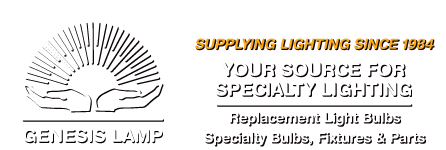ZA230/231 - I n-Pavement Roadway Lighting - In-pavement lights may be used for any application requiring lights for guidance, especially where overhead clearance is restricted.
Lane guidance: In-pavement traffic control lights are used for guidance and flow control in high volume traffic areas or restricted areas. Also for use in hazardous areas, eg. dockside quays, or where overhead lighting is impossible. Recommended fittings ZA230, ZA202
Toll booth lanes: Switchable fittings with red and green lenses are used to signal when it is clear to leave the toll booth, and to maintain lane segregation. Recommended fitting ZA230/220
Wrong way/fog warning: Fittings with red lenses are used to warn against entering a lane the wrong way; or in fog, clear lenses mark the edge of the road. Recommended fitting ZA230
Crossing warning: In-pavement fittings give drivers a highly visible warning when approaching a pedestrian or school crossing. Recommended fitting ZA230
Under-vehicle security lighting: For installation at access/security posts, for the illumination of the underside of vehicles entering restricted/secure areas. Recommended fitting ZA202
Other: Forecourt or driveway lighting, car park or architectural lighting, pedestrian pathway or tunnel lighting, bollard illumination or roundabout identification.
Features
Strength: All atg airports fittings meet BS and FAA requirements. This means that they are designed to withstand landing shock and rollover from aircraft. This far exceeds road requirements.
Mounting: Standard BS and FAA approved mounting bases are used, with an overall depth below grade of between 4” (102mm and 24”(600mm). Projection above the roadway is typically 1/2” (12mm), or 15/8 (41mm) for ZA202, and diameter is 8” (203mm). ZA220 diameter is 12” (304mm).
Lamp life: At airports, typical lamp life is 4000 hours at average usage: minimum lamp life is at least 1000 hours at maximum intensity, although theoretically lamp life can be extended to 10,000 hours.
Output: Photometric output ranges from approximately 20 candelas for green light to 5,000 candelas for clear (white) light. Lenses are temperature shock resistant and can be focused narrowly or widely depending on the desired results.
Color: The most commonly used colours are clear (white), red, green and yellow. Blue is available for special applications. Fittings can be unidirectional, bi-directional or omni-directional; bi-directional fittings can have a different colour on each side.
Lane guidance: In-pavement traffic control lights are used for guidance and flow control in high volume traffic areas or restricted areas. Also for use in hazardous areas, eg. dockside quays, or where overhead lighting is impossible. Recommended fittings ZA230, ZA202
Toll booth lanes: Switchable fittings with red and green lenses are used to signal when it is clear to leave the toll booth, and to maintain lane segregation. Recommended fitting ZA230/220
Wrong way/fog warning: Fittings with red lenses are used to warn against entering a lane the wrong way; or in fog, clear lenses mark the edge of the road. Recommended fitting ZA230
Crossing warning: In-pavement fittings give drivers a highly visible warning when approaching a pedestrian or school crossing. Recommended fitting ZA230
Under-vehicle security lighting: For installation at access/security posts, for the illumination of the underside of vehicles entering restricted/secure areas. Recommended fitting ZA202
Other: Forecourt or driveway lighting, car park or architectural lighting, pedestrian pathway or tunnel lighting, bollard illumination or roundabout identification.
Features
Strength: All atg airports fittings meet BS and FAA requirements. This means that they are designed to withstand landing shock and rollover from aircraft. This far exceeds road requirements.
Mounting: Standard BS and FAA approved mounting bases are used, with an overall depth below grade of between 4” (102mm and 24”(600mm). Projection above the roadway is typically 1/2” (12mm), or 15/8 (41mm) for ZA202, and diameter is 8” (203mm). ZA220 diameter is 12” (304mm).
Lamp life: At airports, typical lamp life is 4000 hours at average usage: minimum lamp life is at least 1000 hours at maximum intensity, although theoretically lamp life can be extended to 10,000 hours.
Output: Photometric output ranges from approximately 20 candelas for green light to 5,000 candelas for clear (white) light. Lenses are temperature shock resistant and can be focused narrowly or widely depending on the desired results.
Color: The most commonly used colours are clear (white), red, green and yellow. Blue is available for special applications. Fittings can be unidirectional, bi-directional or omni-directional; bi-directional fittings can have a different colour on each side.
ZA230/231 - I n-Pavement Roadway Lighting
Part number - ZA230-231-ATG
Part number - ZA230-231-ATG
Custom Field
Base Type e11








